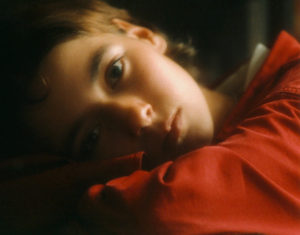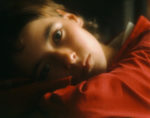
In 1889, the Parliament of the United Kingdom passed the Prevention of Cruelty to, and Protection of, Children Act. An amendment had then been proposed to ban children under the age of 10 from acting on stage, which provoked a widespread opposition in public opinion. Dowson entered into the debate, arguing that children are natural actors, that their performance is always artistic. Moreover, they have a wonderful charm, of which spectators should not be deprived.
THE CULT OF THE CHILD
August 17th, 1889
THE clause in the Protection of Children’s Bill relating to the employment of young children in theatres has been exciting a good deal of discussion lately, and doubtless the end of it all has not yet been heard. As to the merits of the clause in question we do not propose to speak, chiefly we must confess because our sympathies are somewhat divided. It would, of course, be obviously shameful that these ‘little eyases that cry out on the top of question, and are most tyrannically clapped for it,’ should be in any way sacrificed for the sake of the public’s amusement. If these children do, by their contact with the stage, suffer any detriment in mind, body, or estate, which they would not sustain equally in their own homes—presumably humble—without a doubt the clause prohibiting their employment should stand. But is this the case? It is a difficult question, and one on which we should like some less disinterested opinions than have yet been evoked. In the meantime, however, doubtless we must be contented with Lord Dunraven’s compromise, for whatever may be said about pantomime children, the case of ‘star’ children is hardly the same. With them the question is one of aesthetics rather than of ethics, and if, like the former one, it is a question upon which theatre-goers are not in unison, it is one upon which we ourselves have a very strong conviction. Artistically we find the child-actress an enormous boon to the modern stage. There are cases within our recollection in which a play, in itself foolish, or, at the best, trivial, has been redeemed and made artistically possible by the marvellous acting of a tiny child. And there is no greater fallacy than the assumption which we have seen quite lately expressly stated in an article by one of our smartest dramatic critics, that a child’s acting is necessarily inartistic. In our opinion it is generally the reverse. At the risk of appearing paradoxical, we must even assert that there is every reason why a child’s acting should be artistic—more artistic even than that of most ‘grown ups.’ The men and women who are naturally actors and actresses are, as we know by painful experience, in the exception. But in childhood we are all spontaneously dramatic. Without effort children take up poses the most delightfully naive in the world. Tragedy, comedy, romantic drama, they play it all by turns. A child who is a real child and not a precocious little prig, a child who has entered into its inheritance, lives all its real life in the kingdom of pretence. It is only when we have turned our first decade that we begin to grow out of the ‘passion for making believe.’ Anyone who has been a sympathetic observer of a little girl with her doll must admit the truth of this. What dramas! what romances! what a wealth of histrionic power is lavished on the wooden puppet! To the gross adult vision it is hideous—even repulsive; it has probably—assuming it to be the best beloved of dolls—a smudged countenance, and a mutilated body, but it suffices to the glorious imagination of seven for an infinity of rôles. Her name is legion—this staring Dutch atrocity—and she has a personality in the mind of her diminutive mistress for each one of her names. And why should not this charming, childish instinct be trained and cultivated for the pleasure of discriminating folk who can appreciate it. Why should not we have children on the stage—if it does not hurt them? We may be told that, after all, it is unfair; it is making them toil for our amusement. Well, if that is so, if it is really a hardship, people are right to protest. But we doubt if this is the case. Our opinion is that it is a pleasure to them; we believe that they delight in it. And if they work hard at it, it must be remembered that they work very hard at play. As Montaigne says, ‘the play of children is not performed in play, but to be judged as their most serious action.’ And to let children go on the stage is, after all, to do nothing worse than to cultivate their playful instinct. And the children whom we applaud the most, who touch us most, are precisely those who are most themselves, who play with the fewest limitations, who, in a word, are the greatest children. Of course, there are persons who are incapable of delighting in the childish character. But with these we need hardly concern ourselves. It is enough that there are an ever increasing number of people who receive from the beauty of childhood, in art as in life, an exquisite pleasure. There is no more distinctive feature of the age than the enormous importance which children have assumed. We have only to look at a bookstall—to catalogue the countless children’s books, assuredly not chiefly read in the nursery—to go to the Academy, to take up a newspaper to realise this. ‘Que l’enfant veut doit être à lui, s’il le préfère.‘ It is in this adage of Victor Hugo which has taken the place of the repressive maxims of our grandsires. And. on the whole, we agree with Victor Hugo, and, indeed, make it our business to ‘spoil’ all our childish acquaintance as much as we are allowed. Indeed, it is not surprising that an age which is, after all, chiefly pessimist, an age which is so deeply disillusioned, should turn with an immense delight to the constant charm of childhood. Sentimental unrealities à la Buchanan no longer appeal to us; our realism has made us difficult, and, profoundly disgusted with the result of our scepticism, we naturally hail the more eagerly the one unimpeachable consolation which our scepticism cannot touch. And not less in the drama than in the rest of art the cult of the child should have a place, so that just as we seek relief from the sombre and relentless psychology of M. Paul Bourget in the realism of the nursery, the charming pages of Mrs. Ewing, we may find it now and again across the footlights, and acknowledge, as we must all have done a year ago, when we applauded the exertions of the charming little player who performed the title-rôle in Mrs. Winter’s play of Bootle’s Baby, that art can still offer us the counterfeit presentment of one exquisite relation.
Another opponent of the amendment was Charles Lutwidge Dodgson (Lewis Carroll), who argued against it in a more practical way. In the article “Dodgson And The Victorian Cult Of The Child,” Hugues Lebailly writes:
When, in the summer of 1889, he joined the defenders of child-acting in their fight against an amendment to the Prevention of Cruelty to Children Bill that would have banned all under-tens from the stage, […] he just put forward the wrong the adoption of the amendment would cause “to many a poor struggling family, to whom the child’s stage salary is a godsend” while “making many poor children miserable by debarring them from a healthy and innocent occupation which they dearly love.”
Cleverly yet sincerely purporting to be exclusively and selflessly concerned about the involved youngsters’ happiness, he went on suggesting a long list of sensible measures that would secure their schooling, as well as their physical and moral health and safety, most of which were taken up in the final version of the amendment passed later that year.
He also compares his clever tactics to the more emotional approach of Dowson:
Whatever his personal tastes and feelings, he had been wise enough not to militate as zealously as Ernest Dowson, who, in his article ‘The Cult of the Child’, proudly claimed his belonging to the “ever increasing number of people who receive[d] from the beauty of childhood, in art as in life, an exquisite pleasure.”
Source of the text: The Letters of Ernest Dowson, Desmond Flower and Henry Maas (editors), Fairleigh Dickinson University Press (1967), Appendix A, pages 433–435.
Source of the quote:Hugues Lebailly: “Dodgson And The Victorian Cult Of The Child, a reassessment on the hundredth anniversary of ‘Lewis Carroll’s’ death,” in Contrariwise.


it is an estimable fact that Carroll’s proposals were accepted in the final act of the law. However, I believe that Dowson’s arguments are still fully valid – perhaps precisely because of the emotionality that animated them – in a series of areas that transcend the framework of nineteenth-century exploitative labor relations. On the other hand, did these two great writers get to know each other personally?